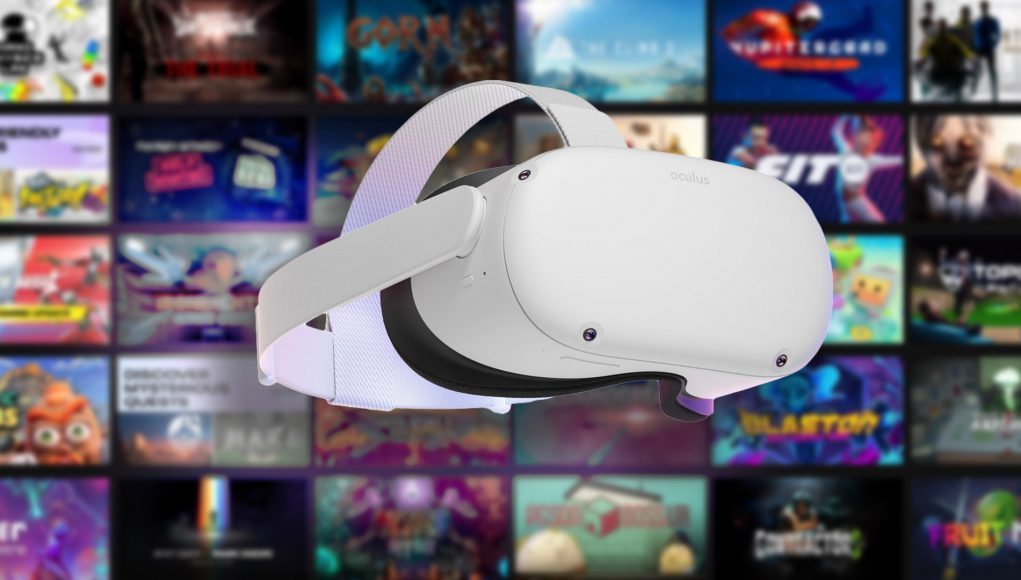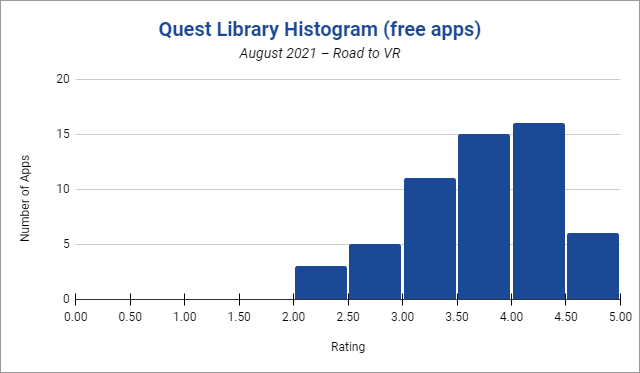Best Rated Free Oculus Quest Apps
The rating of each application is an aggregate of user reviews and a useful way to understand the general reception of each title by customers.
| Rank | Name | Rating (# of ratings) | Rank Change |
| #1 | First Steps | 4.8 (1,064) | ≡ |
| #2 | Oculus First Contact | 4.69 (1,057) | ≡ |
| #3 | Echo VR | 4.63 (7,011) | ≡ |
| #4 | Anne Frank House VR | 4.55 (782) | ≡ |
| #5 | Home After War | 4.51 (150) | ≡ |
| #6 | NOTES ON BLINDNESS | 4.5 (461) | ≡ |
| #7 | Rec Room | 4.48 (11,917) | ≡ |
| #8 | Supernatural* | 4.44 (4,349) | ≡ |
| #9 | Dear Angelica | 4.37 (205) | ↑ 1 |
| #10 | Gravity Sketch | 4.37 (610) | ↓ 1 |
| #11 | Bogo | 4.36 (867) | ≡ |
| #12 | Quill Theater | 4.34 (300) | ≡ |
| #13 | Kizuna AI – Touch the Beat! | 4.32 (437) | ≡ |
| #14 | The Under Presents | 4.31 (1,161) | ≡ |
| #15 | ecosphere | 4.26 (308) | ≡ |
| #16 | Immersed | 4.25 (848) | ≡ |
| #17 | Sphere Toon – VR Comic | 4.2 (152) | ≡ |
| #18 | Mission: ISS | 4.1 (924) | ≡ |
| #19 | Bait! | 4.09 (1,200) | ≡ |
| #20 | Henry | 4.04 (281) | ≡ |
Rank change & stats compared to July 2021
Dropouts:
Facebook Horizon (Invite-only Beta)
- Among the 20 best rated free Quest apps
- Average rating (mean): 4.4 out of 5 (±0)
- Among all free Quest apps
- Average rating (mean): 3.7 out of 5 (±0)
* free trial followed by paid subscription








